- 27 May 2024 Climatetech Day One
- 28 May 2024 Climatetech Day Two
- 29 May 2024 Climatetech Day Three
11:00 AM 11:15 AM
Chair’s Opening Remarks
Monday 27 May 2024
11:00 AM - 11:15 AM
11:30 AM 12:25 PM
Session 1 – Addressing the technical and investment challenges in the floating offshore wind economy
Floating offshore wind (FOW) is an evolution of traditional “fixed” offshore wind. While fixed-bottom turbines dominate Northern Europe, floating substructures allow development in deeper sea basins. The Mediterranean and North Atlantic Coastal regions, due to their topography, are prime candidates for FOW. However, FOW faces technical challenges such as stability control, maintenance solutions, energy management, and long-distance electricity transmission. Portugal, Spain and Italy have ambitious goals for offshore wind. Spain aims to have 3GW of floating offshore wind capacity by 2030; Portugal has targeted 10GW by 2030; and Italy initially lagged behind with targets of 0.9 GW of offshore wind capacity by 2030 but now targets 20GW of floating wind by 2050. The levelised cost of energy (LCOE) for floating offshore wind varies based on factors like development, operational expenses, and capital costs. Clear policies, technology-specific auctions, and revenue stabilisation mechanisms (such as Contracts for Difference) are crucial for successful interconnection and offshore wind growth.
- How can the development of offshore wind hybrid projects increase energy security and create collaboration between numerous markets and nations?
- What are the implications for offshore and near-shore infrastructure based upon hybrid energy system projects that are currently being implemented?
- What are the legal, regulatory, and other barriers to offshore wind hybrids?
Gain insights into the potential of floating offshore wind and the technical, regulatory, and funding model challenges associated. Consider the implications and challenges associated with their implementation on offshore and near-shore infrastructure, including legal and regulatory considerations.
Monday 27 May 2024
11:30 AM - 12:25 PM
Session 1 – Addressing the technical and investment challenges in the floating offshore wind economy
Floating offshore wind (FOW) is an evolution of traditional “fixed” offshore wind. While fixed-bottom turbines dominate Northern Europe, floating substructures allow development in deeper sea basins. The Mediterranean and North Atlantic Coastal regions, due to their topography, are prime candidates for FOW. However, FOW faces technical challenges such as stability control, maintenance solutions, energy management, and long-distance electricity transmission. Portugal, Spain and Italy have ambitious goals for offshore wind. Spain aims to have 3GW of floating offshore wind capacity by 2030; Portugal has targeted 10GW by 2030; and Italy initially lagged behind with targets of 0.9 GW of offshore wind capacity by 2030 but now targets 20GW of floating wind by 2050. The levelised cost of energy (LCOE) for floating offshore wind varies based on factors like development, operational expenses, and capital costs. Clear policies, technology-specific auctions, and revenue stabilisation mechanisms (such as Contracts for Difference) are crucial for successful interconnection and offshore wind growth.
- How can the development of offshore wind hybrid projects increase energy security and create collaboration between numerous markets and nations?
- What are the implications for offshore and near-shore infrastructure based upon hybrid energy system projects that are currently being implemented?
- What are the legal, regulatory, and other barriers to offshore wind hybrids?
Gain insights into the potential of floating offshore wind and the technical, regulatory, and funding model challenges associated. Consider the implications and challenges associated with their implementation on offshore and near-shore infrastructure, including legal and regulatory considerations.
12:25 PM 12:40 PM
Keynote Presentation: Long-Duration Energy Storage as the Cornerstone of Security of Supply in RES-dominated Systems
12:40 PM 01:30 PM
Session 2 – Addressing the challenges in offshore wind supply chain, investment and costs
Offshore wind has experienced a difficult year, challenged by a squeezed supply chain and escalating costs - at a time when urgent investment is needed to meet global net zero targets and offshore wind is crucial to meet Europe’s primary energy demands, expected to grow 150% by 2050 in a sustainable manner. RWE estimates this will require 400-450 GW from offshore wind. In creating the supply chains and overcoming market inefficiencies, developers, manufacturers, investors, and policymakers need to mitigate against macroeconomic and geopolitical risks to facilitate investment and project development.
-
- What resilience plans could be implemented by developers to meet investment requirements and minimise risk?
- What are the policies and action plans that could be implemented by the supply chain and institutions to alleviate disruptions?
- How can policymakers support the effective development of the market to ensure economic investment and energy price stability?
Audience Insights:
Discover what resilience plans need to be implemented for meeting investment requirements and mitigating risk. Understand the policies and action plans to avoid disruptions in the supply chain, while also exploring policy actions to support market development for economic investment and energy price stability.
Speakers:
Monday 27 May 2024
12:40 PM - 01:30 PM
Session 2 – Addressing the challenges in offshore wind supply chain, investment and costs
Offshore wind has experienced a difficult year, challenged by a squeezed supply chain and escalating costs - at a time when urgent investment is needed to meet global net zero targets and offshore wind is crucial to meet Europe’s primary energy demands, expected to grow 150% by 2050 in a sustainable manner. RWE estimates this will require 400-450 GW from offshore wind. In creating the supply chains and overcoming market inefficiencies, developers, manufacturers, investors, and policymakers need to mitigate against macroeconomic and geopolitical risks to facilitate investment and project development.
-
- What resilience plans could be implemented by developers to meet investment requirements and minimise risk?
- What are the policies and action plans that could be implemented by the supply chain and institutions to alleviate disruptions?
- How can policymakers support the effective development of the market to ensure economic investment and energy price stability?
Audience Insights:
Discover what resilience plans need to be implemented for meeting investment requirements and mitigating risk. Understand the policies and action plans to avoid disruptions in the supply chain, while also exploring policy actions to support market development for economic investment and energy price stability.
Speakers:
01:30 PM 02:40 PM
Networking Lunch Break
Monday 27 May 2024
01:30 PM - 02:40 PM
Networking Lunch Break
02:40 PM 03:25 PM
Session 3 – Sustainable mobility: Balancing new infrastructure to store and supply new energy vectors and vehicles with current assets
Investment in ChargePoint infrastructure and incentivising the modernisation of fleets will be required to support the transition to sustainable mobility. Policy measures have a key role in the initial uptake of electric light-duty vehicles (LDVs) and underpin the scale-up in EV manufacturing and battery industries - primary measures being subsidies and registration tax rebates. Tightening of fuel economy and tailpipe CO2 standards have accelerated the adoption of EVs. Today, over 85% of car sales worldwide are subject to such standards. CO2 emissions requirements in the European Union played a significant role in promoting electric car sales - 2020 saw the largest annual increase to reach 2.1 million.
- What role will the EU Commission’s ‘Fit for 55’ package have in toughening standards of cars and vans to reduce emissions which currently account for 15% of the EU total?
- What strategies are in place to combine new, environmentally advanced vehicles with existing fleet that aren’t due to be decommissioned until a much later date?
- How can we streamline the permitting process and provide clear guidelines to help accelerate the deployment of EV charging infrastructure?
Audience Insights:
The impact of the EU Commission’s ‘Fit for 55’ package on emissions reduction and strategies for integrating new environmentally advanced vehicles with existing fleets. Gain insights into streamlining the permitting process to accelerate the deployment of EV charging infrastructure through clear guidelines.
Monday 27 May 2024
02:40 PM - 03:25 PM
Session 3 – Sustainable mobility: Balancing new infrastructure to store and supply new energy vectors and vehicles with current assets
Investment in ChargePoint infrastructure and incentivising the modernisation of fleets will be required to support the transition to sustainable mobility. Policy measures have a key role in the initial uptake of electric light-duty vehicles (LDVs) and underpin the scale-up in EV manufacturing and battery industries - primary measures being subsidies and registration tax rebates. Tightening of fuel economy and tailpipe CO2 standards have accelerated the adoption of EVs. Today, over 85% of car sales worldwide are subject to such standards. CO2 emissions requirements in the European Union played a significant role in promoting electric car sales - 2020 saw the largest annual increase to reach 2.1 million.
- What role will the EU Commission’s ‘Fit for 55’ package have in toughening standards of cars and vans to reduce emissions which currently account for 15% of the EU total?
- What strategies are in place to combine new, environmentally advanced vehicles with existing fleet that aren’t due to be decommissioned until a much later date?
- How can we streamline the permitting process and provide clear guidelines to help accelerate the deployment of EV charging infrastructure?
Audience Insights:
The impact of the EU Commission’s ‘Fit for 55’ package on emissions reduction and strategies for integrating new environmentally advanced vehicles with existing fleets. Gain insights into streamlining the permitting process to accelerate the deployment of EV charging infrastructure through clear guidelines.
03:25 PM 03:40 PM
Presentation: Blockchain, smart cities and sharing energy within communities
03:40 PM 04:10 PM
Networking Coffee Break
Monday 27 May 2024
03:40 PM - 04:10 PM
Networking Coffee Break
04:10 PM 05:10 PM
Session 4 – Repowering renewable energy assets maximising cost savings and circular economy gains
The EU aims to be the leading hub for green industry. This requires an uplift in solar and wind generation and storage capacity. The repowering of renewable energy assets and the supply chain for critical minerals contains geopolitical risks and environmentally unsustainable practices. The demand for critical materials is expected to increase exponentially in the coming years. To plan for this, the European Parliament and Council have produced the Critical Raw Materials Act (CRMA) - regulation that affects mining, processing, and manufacturing companies. New practices and technologies are required to meet increasing regulation whilst meeting the principles of circularity and sustainability.
- How can repowering existing renewable energy assets optimise performance whilst also aligning with circular economy principles?
- What is the role of technology and training in extending the lifespan of wind turbines, solar panels, and energy storage systems?
- What is the role of the European Critical Raw Materials Act in promoting supply chain sustainability and circularity?
Audience Insights:
Insights into optimising performance and lifespan extension of renewable energy assets through repowering and technology advancements. Understand the role of the European Critical Raw Materials Act in fostering supply chain sustainability and circularity.
Speakers:
Monday 27 May 2024
04:10 PM - 05:10 PM
Session 4 – Repowering renewable energy assets maximising cost savings and circular economy gains
The EU aims to be the leading hub for green industry. This requires an uplift in solar and wind generation and storage capacity. The repowering of renewable energy assets and the supply chain for critical minerals contains geopolitical risks and environmentally unsustainable practices. The demand for critical materials is expected to increase exponentially in the coming years. To plan for this, the European Parliament and Council have produced the Critical Raw Materials Act (CRMA) - regulation that affects mining, processing, and manufacturing companies. New practices and technologies are required to meet increasing regulation whilst meeting the principles of circularity and sustainability.
- How can repowering existing renewable energy assets optimise performance whilst also aligning with circular economy principles?
- What is the role of technology and training in extending the lifespan of wind turbines, solar panels, and energy storage systems?
- What is the role of the European Critical Raw Materials Act in promoting supply chain sustainability and circularity?
Audience Insights:
Insights into optimising performance and lifespan extension of renewable energy assets through repowering and technology advancements. Understand the role of the European Critical Raw Materials Act in fostering supply chain sustainability and circularity.
Speakers:
05:10 PM 05:25 PM
Chair’s Closing Remarks
Monday 27 May 2024
05:10 PM - 05:25 PM
Chair’s Closing Remarks
05:25 PM 05:25 PM
Close of Summit Day 1
Monday 27 May 2024
05:25 PM - 05:25 PM
Close of Summit Day 1
08:30 AM 09:15 AM
Women in Energy Networking Breakfast
in Delegate Lounge
Tuesday 28 May 2024
08:30 AM - 09:15 AM
Women in Energy Networking Breakfast
in Delegate Lounge
10:00 AM 10:15 AM
Chair’s Opening Remarks
Tuesday 28 May 2024
10:00 AM - 10:15 AM
Chair’s Opening Remarks
10:15 AM 11:00 AM
Session 5 – Utility scale solar: Overcoming challenges associated with electricity grid connections
The European Solar Energy Strategy targets over 320 GW of newly installed solar photovoltaic capacity by 2025, and 600 GW by 2030. To transition grids from centralised fossil power plants to distributed renewable infrastructure will require substantial investments in infrastructure and new optimising technologies. Beyond funding, several regulatory hurdles remain, including outdated grid infrastructure, bureaucracy and UK grid connections for renewable deployments taking up to 15 years. Emerging priorities are for projects to combine long-duration energy storage (LDES) to ease transmission congestion by storing excess energy during periods of over-generation and deploying on demand.
- How can grid operators forecast the demand and impact on long-term grid investments?
- Which investments in Grid Enhancing Technologies (GETs), transmission line infrastructure and interconnection should be prioritised?
- Will integrating battery storage with solar address intermittency challenges?
Audience Insights:
Capacity planning challenges, prioritisation of investments in Grid Enhancing Technologies (GETs) and transmission line infrastructure, and strategies for enhancing reliability and efficiency in utility-scale solar through battery storage integration, addressing intermittency challenges.
Tuesday 28 May 2024
10:15 AM - 11:00 AM
Session 5 – Utility scale solar: Overcoming challenges associated with electricity grid connections
The European Solar Energy Strategy targets over 320 GW of newly installed solar photovoltaic capacity by 2025, and 600 GW by 2030. To transition grids from centralised fossil power plants to distributed renewable infrastructure will require substantial investments in infrastructure and new optimising technologies. Beyond funding, several regulatory hurdles remain, including outdated grid infrastructure, bureaucracy and UK grid connections for renewable deployments taking up to 15 years. Emerging priorities are for projects to combine long-duration energy storage (LDES) to ease transmission congestion by storing excess energy during periods of over-generation and deploying on demand.
- How can grid operators forecast the demand and impact on long-term grid investments?
- Which investments in Grid Enhancing Technologies (GETs), transmission line infrastructure and interconnection should be prioritised?
- Will integrating battery storage with solar address intermittency challenges?
Audience Insights:
Capacity planning challenges, prioritisation of investments in Grid Enhancing Technologies (GETs) and transmission line infrastructure, and strategies for enhancing reliability and efficiency in utility-scale solar through battery storage integration, addressing intermittency challenges.
Speakers:
11:30 AM 12:00 PM
Networking Coffee Break
Tuesday 28 May 2024
11:30 AM - 12:00 PM
Networking Coffee Break
12:00 PM 12:45 PM
Session 6 – Developing distributed power generation through photovoltaics
Technological innovations and a changing economic and regulatory environment have resulted in a renewed interest for distributed generation. Developments in distributed generation technologies and constraints on the construction of new transmission lines have increased demand for highly reliable clean electricity. Portugal’s energy strategy aims for 80% of electricity in the country to be renewable by 2026, and 85% by 2030. The revised plan sets a target of 20.4 GW of operational PV systems in 2030, with 14.9 GW for utility-scale plants and 5.5 GW for distributed generation. The 14.9 GW will come from a few hundred companies, while the 5.5 GW will involve thousands of private households and commercial and industrial entities looking to secure and decarbonise their energy sources.
-
- Strategies to maintain grid stability, voltage regulation, and frequency control while accommodating variable PV generation.
- Policies, regulations, and incentives to promote distributed PV adoption.
- Navigating local regulations and obtaining permits.
- Energy-efficient practices and technologies for end-users.
Audience Insights:
Strategies for grid stability with variable PV generation and information on distributed PV adoption through policies, navigating local regulations, and implementing energy-efficient practices for sustainable energy deployment.
Tuesday 28 May 2024
12:00 PM - 12:45 PM
Session 6 – Developing distributed power generation through photovoltaics
Technological innovations and a changing economic and regulatory environment have resulted in a renewed interest for distributed generation. Developments in distributed generation technologies and constraints on the construction of new transmission lines have increased demand for highly reliable clean electricity. Portugal’s energy strategy aims for 80% of electricity in the country to be renewable by 2026, and 85% by 2030. The revised plan sets a target of 20.4 GW of operational PV systems in 2030, with 14.9 GW for utility-scale plants and 5.5 GW for distributed generation. The 14.9 GW will come from a few hundred companies, while the 5.5 GW will involve thousands of private households and commercial and industrial entities looking to secure and decarbonise their energy sources.
-
- Strategies to maintain grid stability, voltage regulation, and frequency control while accommodating variable PV generation.
- Policies, regulations, and incentives to promote distributed PV adoption.
- Navigating local regulations and obtaining permits.
- Energy-efficient practices and technologies for end-users.
Audience Insights:
Strategies for grid stability with variable PV generation and information on distributed PV adoption through policies, navigating local regulations, and implementing energy-efficient practices for sustainable energy deployment.
12:45 PM 01:45 PM
Networking Lunch Break
Tuesday 28 May 2024
12:45 PM - 01:45 PM
Networking Lunch Break
01:45 PM 02:45 PM
Session 7 – Hybridised onshore renewable energy projects
Hybridising onshore renewables is an essential part of the energy transition toolkit. Combining solar, storage and wind facilities drives economic efficiencies. As companies face grid connection backlogs, co-locating renewable energy with industrial consumption can maximise the utilisation of renewable energy. Excess energy use for long duration storage or in producing green hydrogen opens further revenue streams through HPPAs and mitigates intermittency issues. However, adding battery storage to renewable energy generation can potentially double the capital outlay required and may not demonstrate ROI for years.
- How does hybridising onshore renewables, i.e. combining solar, storage and wind facilities, drive efficiencies?
- How can training and technology help to efficiently managing current assets?
- What role can hybridising projects play in enabling permitting and driving grid stabilisation through diversifying energy sources?
Audience Insights:
Uncover the benefits of hybridising onshore renewables, optimising asset management through training and technology, leveraging hybrids for permitting and grid stability, and maximising renewable energy use by co-locating with industrial consumption.
Tuesday 28 May 2024
01:45 PM - 02:45 PM
Session 7 – Hybridised onshore renewable energy projects
Hybridising onshore renewables is an essential part of the energy transition toolkit. Combining solar, storage and wind facilities drives economic efficiencies. As companies face grid connection backlogs, co-locating renewable energy with industrial consumption can maximise the utilisation of renewable energy. Excess energy use for long duration storage or in producing green hydrogen opens further revenue streams through HPPAs and mitigates intermittency issues. However, adding battery storage to renewable energy generation can potentially double the capital outlay required and may not demonstrate ROI for years.
- How does hybridising onshore renewables, i.e. combining solar, storage and wind facilities, drive efficiencies?
- How can training and technology help to efficiently managing current assets?
- What role can hybridising projects play in enabling permitting and driving grid stabilisation through diversifying energy sources?
Audience Insights:
Uncover the benefits of hybridising onshore renewables, optimising asset management through training and technology, leveraging hybrids for permitting and grid stability, and maximising renewable energy use by co-locating with industrial consumption.
02:45 PM 03:00 PM
Presentation: The Global Potential for Onshore and Nearshore Wave Technology’
03:00 PM 03:30 PM
Networking Coffee Break
Tuesday 28 May 2024
03:00 PM - 03:30 PM
Networking Coffee Break
03:30 PM 05:00 PM
Start up & Innovation Showcase
Today’s energy industry is awash with new and innovative ideas, technologies, entrepreneurs, and startups. As the energy transition continues to accelerate at pace, it is vital to identify these latest technologies and ensure they have a platform to showcase their groundbreaking innovations. This session provides a stage for innovative organisations to showcase their products, technologies and growth strategies to senior peers and investors, knowledge-share and make the connections necessary to take their business and the energy transition to the next level.
Tuesday 28 May 2024
03:30 PM - 05:00 PM
Start up & Innovation Showcase
Today’s energy industry is awash with new and innovative ideas, technologies, entrepreneurs, and startups. As the energy transition continues to accelerate at pace, it is vital to identify these latest technologies and ensure they have a platform to showcase their groundbreaking innovations. This session provides a stage for innovative organisations to showcase their products, technologies and growth strategies to senior peers and investors, knowledge-share and make the connections necessary to take their business and the energy transition to the next level.
05:00 PM 05:10 PM
Chair’s Closing Remarks
Tuesday 28 May 2024
05:00 PM - 05:10 PM
Chair’s Closing Remarks
05:10 PM 05:10 PM
Close of Summit Day 2
Tuesday 28 May 2024
05:10 PM - 05:10 PM
Close of Summit Day 2
09:10 AM 09:20 AM
Chair’s Opening Remarks
Wednesday 29 May 2024
09:10 AM - 09:20 AM
Chair’s Opening Remarks
09:20 AM 10:05 AM
Session 8 – The role of EU energy storage at a time of increasing demand
The increasing proportion of variable renewable energy (VRE) sources such as solar and wind necessitate a more adaptable energy framework to guarantee their efficient and dependable integration. Battery storage systems are emerging as a promising solution to enhance system flexibility, due to their distinctive ability to rapidly absorb, store, and subsequently redistribute electricity. Utility-scale stationary battery storage systems, also known as front-of-the-meter, large-scale, or grid-scale battery storage, play a crucial role in facilitating the integration of a larger proportion of VRE into the system by offering flexibility.
- What flexible energy storage solutions are available to enable renewables onto energy grids?
- For electricity distribution, what are the issues surrounding efficiency, optimisation, redundancy, and standardisation?
- Can the different support mechanisms being discussed help give storage the boost it desperately needs?
Audience Insights:
Learn about flexible energy storage solutions, issues in electricity distribution efficiency, and explore support mechanisms to boost storage adoption, offering valuable insights into grid integration challenges and solutions.
Wednesday 29 May 2024
09:20 AM - 10:05 AM
Session 8 – The role of EU energy storage at a time of increasing demand
The increasing proportion of variable renewable energy (VRE) sources such as solar and wind necessitate a more adaptable energy framework to guarantee their efficient and dependable integration. Battery storage systems are emerging as a promising solution to enhance system flexibility, due to their distinctive ability to rapidly absorb, store, and subsequently redistribute electricity. Utility-scale stationary battery storage systems, also known as front-of-the-meter, large-scale, or grid-scale battery storage, play a crucial role in facilitating the integration of a larger proportion of VRE into the system by offering flexibility.
- What flexible energy storage solutions are available to enable renewables onto energy grids?
- For electricity distribution, what are the issues surrounding efficiency, optimisation, redundancy, and standardisation?
- Can the different support mechanisms being discussed help give storage the boost it desperately needs?
Audience Insights:
Learn about flexible energy storage solutions, issues in electricity distribution efficiency, and explore support mechanisms to boost storage adoption, offering valuable insights into grid integration challenges and solutions.
10:05 AM 10:50 AM
Session 9 – Ensuring the grid is renewable energy ready: Regulations, permitting, enhanced technologies & increased efficiencies
Grids across Europe are facing the same issue – permitting systems that were designed around a minimal number of consistent fossil fuel sources must now harness numerous intermittent renewable energy sources. Regulatory and permitting reform and adopting new innovations that are commercially available today are key to enabling grid modernisation. The Portuguese solar market has made several regulatory improvements –including loosening environmental assessments for projects of up to 100 hectares – yet more needs to be done. Transmission system upgrades are also needed to expand the capacity of existing high-voltage transmission lines to allow greater flows of renewable electricity, carry electricity long distances and better-connect regions and communities. In the long-term, upgrades are likely to require more cables, poles, wires, and transformers to transport electricity, as well as skilled workers, investment, and specific materials - all of which will be in high demand as many countries face the same challenges at the same time.
- What are the shared policy and technical problems facing European countries in readying their grids for the future?
- What are the regulations and challenges involved in gaining permits and how can processes become more streamlined to accelerate applications?
- How can we engage effectively with local stakeholders to overcome objections to necessary grid infrastructure investments?
Audience Insights:
Shared policy and technical challenges for European grid readiness - navigating regulations to streamline permit processes, and engaging local stakeholders to overcome objections, facilitating efficient grid infrastructure development.
Wednesday 29 May 2024
10:05 AM - 10:50 AM
Session 9 – Ensuring the grid is renewable energy ready: Regulations, permitting, enhanced technologies & increased efficiencies
Grids across Europe are facing the same issue – permitting systems that were designed around a minimal number of consistent fossil fuel sources must now harness numerous intermittent renewable energy sources. Regulatory and permitting reform and adopting new innovations that are commercially available today are key to enabling grid modernisation. The Portuguese solar market has made several regulatory improvements –including loosening environmental assessments for projects of up to 100 hectares – yet more needs to be done. Transmission system upgrades are also needed to expand the capacity of existing high-voltage transmission lines to allow greater flows of renewable electricity, carry electricity long distances and better-connect regions and communities. In the long-term, upgrades are likely to require more cables, poles, wires, and transformers to transport electricity, as well as skilled workers, investment, and specific materials - all of which will be in high demand as many countries face the same challenges at the same time.
- What are the shared policy and technical problems facing European countries in readying their grids for the future?
- What are the regulations and challenges involved in gaining permits and how can processes become more streamlined to accelerate applications?
- How can we engage effectively with local stakeholders to overcome objections to necessary grid infrastructure investments?
Audience Insights:
Shared policy and technical challenges for European grid readiness - navigating regulations to streamline permit processes, and engaging local stakeholders to overcome objections, facilitating efficient grid infrastructure development.
10:50 AM 11:15 AM
Networking Coffee Break
Wednesday 29 May 2024
10:50 AM - 11:15 AM
Networking Coffee Break
11:15 AM 12:00 PM
Session 10 – Energy efficiency first: The key to accelerating decarbonisation?
EU Energy Efficiency Directive (EED, 2023 revision) established the principle of “energy efficiency first”, binding for EU countries to collectively ensure an additional 11.7% reduction in energy consumption by 2030. EED emphasises that energy efficiency must be considered in all relevant policy and major investment decisions across energy and non-energy sectors. Experts at COP28 discussed the need to double the annual rate of energy efficiency improvements by 2030. The International Energy Agency (IEA) highlighted that efficiency gains could cut the efforts required to achieve carbon neutrality by 2050 in half.
- What role will disruptive technologies play in enabling greater energy efficiency?
- How can the policy makers further building efficiencies and electricity generation?
- How will ADENE’s GSI Energy & Sustainability Programme prepare the next generation of Energy Leaders?
Audience Insights:
Learn more about the impact of the EU Energy Efficiency Directive (EED) and the critical role of efficiency in accelerating carbon neutrality efforts.
Speakers:
Wednesday 29 May 2024
11:15 AM - 12:00 PM
Session 10 – Energy efficiency first: The key to accelerating decarbonisation?
EU Energy Efficiency Directive (EED, 2023 revision) established the principle of “energy efficiency first”, binding for EU countries to collectively ensure an additional 11.7% reduction in energy consumption by 2030. EED emphasises that energy efficiency must be considered in all relevant policy and major investment decisions across energy and non-energy sectors. Experts at COP28 discussed the need to double the annual rate of energy efficiency improvements by 2030. The International Energy Agency (IEA) highlighted that efficiency gains could cut the efforts required to achieve carbon neutrality by 2050 in half.
- What role will disruptive technologies play in enabling greater energy efficiency?
- How can the policy makers further building efficiencies and electricity generation?
- How will ADENE’s GSI Energy & Sustainability Programme prepare the next generation of Energy Leaders?
Audience Insights:
Learn more about the impact of the EU Energy Efficiency Directive (EED) and the critical role of efficiency in accelerating carbon neutrality efforts.
Speakers:
12:00 PM 12:10 PM
Chair’s Closing Remarks
Wednesday 29 May 2024
12:00 PM - 12:10 PM
Chair’s Closing Remarks
12:10 PM 12:10 PM
End of the Climatetech Conference
Wednesday 29 May 2024
12:10 PM - 12:10 PM
End of the Climatetech Conference
- 27 May 2024 Climatetech Day One
- 28 May 2024 Climatetech Day Two
- 29 May 2024 Climatetech Day Three


























































































